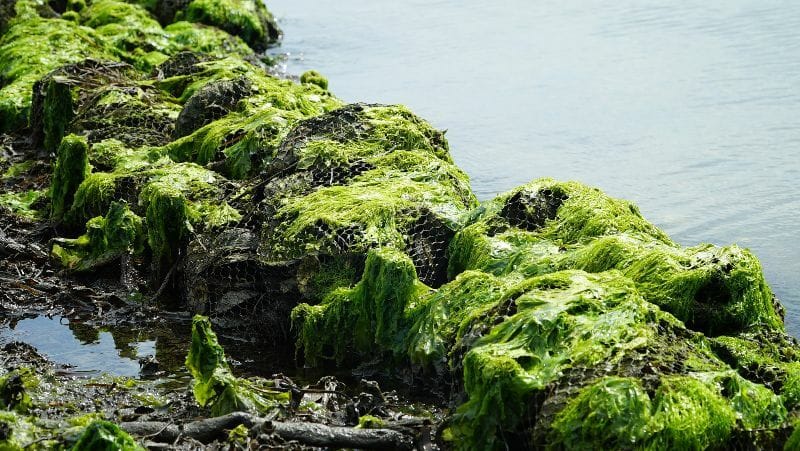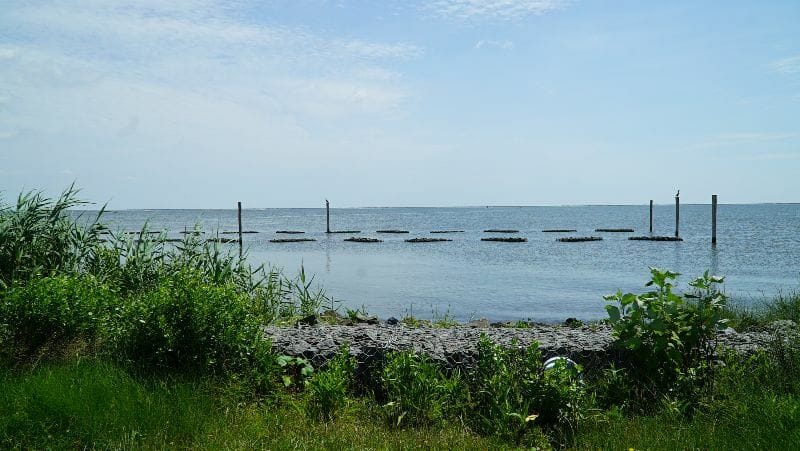- My World's on Fire
- Posts
- The tide is high
The tide is high
The tide is high

The tide is high
Welcome to My World’s on Fire, a newsletter about disasters from journalist Colleen Hagerty. If you’re seeing this newsletter for the first time, let’s make this a regular thing—subscribe for free to receive disaster deep-dives, Q&As, and context in your inbox on Thursday evenings.
A quick housekeeping note: you might have noticed that this newsletter is looking a little different these days, and that's because I've switched providers. So, to make sure you continue getting MWOF in your inbox, go ahead and add [email protected] to your contacts. You can also always reach me directly at that address!
On a hot-even-for-July day this past summer, I pulled on thigh-high rubber boots and trudged into the spongy muck of a New Jersey marsh. Noticing my shaky steps, coastal engineer Doug Janiec advised me to take it slow—otherwise, it was easy to slip or get stuck, he said. It was simple advice I’d regularly forget over the next 48 hours as I tried to make the most of the unique opportunity I had to consult with more than a dozen multidisciplinary experts. I was there to learn about their efforts to restore the Jersey shore in the wake of Hurricane Sandy and make it more resilient for storms in the years to come.Last week marked the tenth anniversary of Sandy’s landfall in New Jersey and New York. As I’ve previously shared, covering the storm was pretty much my disaster reporting origin story, and coming up on that milestone, I knew I wanted to continue my coverage of the impacted communities.

Doug Janiec, Danielle McCulloch, and Dr. Dane Ward discuss the marsh restoration work in progress in Barnegat Township, NJ
I ended up focusing on a federal agency that is probably not the first that comes to mind when you think of disaster recovery and mitigation: the U.S. Fish and Wildlife Service (FWS). FWS biologist Danielle McCulloch spoke at a workshop I attended last year about her agency's initiatives to restore coastal habitats after Sandy, and while the work itself sounded interesting—much of it involving nature-based solutions, or trying to use natural materials and work with natural processes—it was her frank discussion of some of the agency’s less-successful efforts that made me want to reach out. Over many phone calls and those intense two days of field trips, she was open about the many lessons her team has learned trying to find strategies to mitigate the effects of the sea level rise along this highly-populated and dynamic coast.
I was able to share some of that knowledge in an article for
, which I hope you’ll check out (the link here is gifted, meaning you can read it paywall free). The article is a part of the Post's Climate Solutions section, and it includes some of the successful strategies the FWS projects have uncovered. But it also doesn't shy away from the failures—a
s you’ll see in this piece, solutions journalism isn’t just about celebrating wins, it also calls for interrogating what works and why, as well as what lessons can be learned.

Bags of shells are used to anchor marsh plants in Barnegat Township, NJ
One key finding from this decade of research and investment that experts pointed to repeatedly is the need for a wide net of parties to work together on mitigation tactics.
As McCulloch and others described it, none of the initiatives I covered would have been possible without large coalitions that included government officials, scientists, researchers, engineers, non-profit leaders, and local residents. It was only by collaborating that they were able to get projects off the ground and then continue to monitor their progress, which is necessary for ensuring that they are effective and addressing issues if they are not. While it might sound intuitive, I was told that this type of collaboration was not common before Hurricane Sandy, but it's now created a blueprint that is being followed throughout the state.

"Reefs" of rock-and-shell-filled baskets in Barnegat Bay, NJ (read my article for more information about how these work!)
This morning, I spoke with a class of college students for a course on “Disasters and Emergencies.” After I shared my ongoing experience covering Hurricane Sandy, one of the students asked me how I knew when I was “done” covering an area, and I told them the same thing I wrote in my Sandy anniversary newsletter last year—I never feel like I am. With this article, I feel like I just scratched the surface of the resilience work these teams are doing, and there are so many other stories to tell about Sandy, too.
Just to share a few that caught my eye:
Gothamist detailed the long-term effects of a buyout program in a hard-hit neighborhood in Staten Island, and managed retreat expert A.R. Siders shared a thread about how she’s seen research in this space evolve over the past decade.
Important accountability reporting from The City about development choices in the years since Sandy.
I really appreciated these reflections in Chalkbeat from educators and parents on how the storm changed their lives.
“For some neighborhoods, climate adaptation can look like storing chemicals on higher ground. It can be as mundane as regularly checking auto equipment for leaks.” I loved this Atmos feature on the role of auto shops in climate adaptation.
Grist looked at adaptation plans in New York City public housing developments, including plans to “sink” basketball courts to help mitigate flooding.
After I answered that student's question, I thought about a line from a Joan Didion essay about beginnings and endings.
“It is easy to see the beginnings of things, and harder to see the ends,” she wrote.
The beginning of Hurricane Sandy I remember clearly, from the first forecasts to the swells of waves along the shore of Staten Island and the powerful wind threatening to tip over my tripod.
But the end? Ten years later, I still don't see it.
As always
thank you for subscribing to My World’s on Fire.This newsletter is powered by the MWOF member program. So, if you’re a regular reader, please consider joining for just $5/month or $50/year. You'll get extra editions in your inbox each month and an opportunity to help shape this newsletter as it heads into its third year.Or, if you’re not into commitment, you can make a one-time donation of any amount.It also means the world when you spread the word about MWOF with your family, friends, and total strangers on social media. This week’s subscriber shout-out goes to Joe Lowery for this kind tweet:
Journalist @colleenhagerty is doing important reporting on the hazards we face. She's done great work on explaining, for instance, how climate change is changing wildfires and what that means for communities impacted by fires. Read this thread, and if you can, support her work!
— Joe Lowry (@PreparednessJoe)
8:17 PM • Oct 3, 2022
Now, here’s a
"baby Shark-cuterie"
— Karen K. Ho (@karenkho)
11:19 PM • Oct 31, 2022
for reading to the end.
Colleen